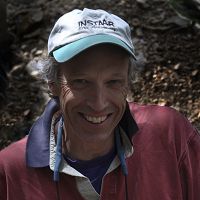Anderson et al., 2015
Exhumation by debris flows in the 2013 Colorado Front Range storm
Anderson, S.W., Anderson, S. P., and Anderson, R. S. (2015)
Geology, Geological Society of America
-
Boulder, INVESTIGATOR
-
Boulder, INVESTIGATOR
-
Boulder, GRAD STUDENT
Abstract
The relative importance of extreme events in the long-term exhumation of landscapes is difficult to determine; the degree to which modern records capture long-term mean process rates is therefore commonly unknown. In September 2013, a massive precipitation event in the Front Range of Colorado (USA) triggered over 1100 landslides and debris flows in a historically sedate landscape. Here we employ topographic differencing, utilizing repeat aerial lidar, to quantify net sediment transport volumes in 120 of these mass movements within an area of 102 km2 west of Boulder, Colorado. Comparing our results against published long-term erosion rates, we find that these mass movements evacuated the equivalent of hundreds to thousands of years of hillslope weathering products. We conclude that (1) rare debris flows perform the majority of sediment transport and channel erosion within steep channels along the eastern edge of the Front Range, potentially explaining discrepancies between modern sediment yields and long-term erosion rates in such settings, and (2) the high spatial density of debris flows along the corridors bounding steep canyons suggests that the landscape switches to debris-flow dominance as knickpoints pass headward along the canyons.
Citation
Anderson, S.W., Anderson, S. P., and Anderson, R. S. (2015): Exhumation by debris flows in the 2013 Colorado Front Range storm. Geology, Geological Society of America. DOI: 10.1130/G36507.1
 This Paper/Book acknowledges NSF CZO grant support.
This Paper/Book acknowledges NSF CZO grant support.
Explore Further



